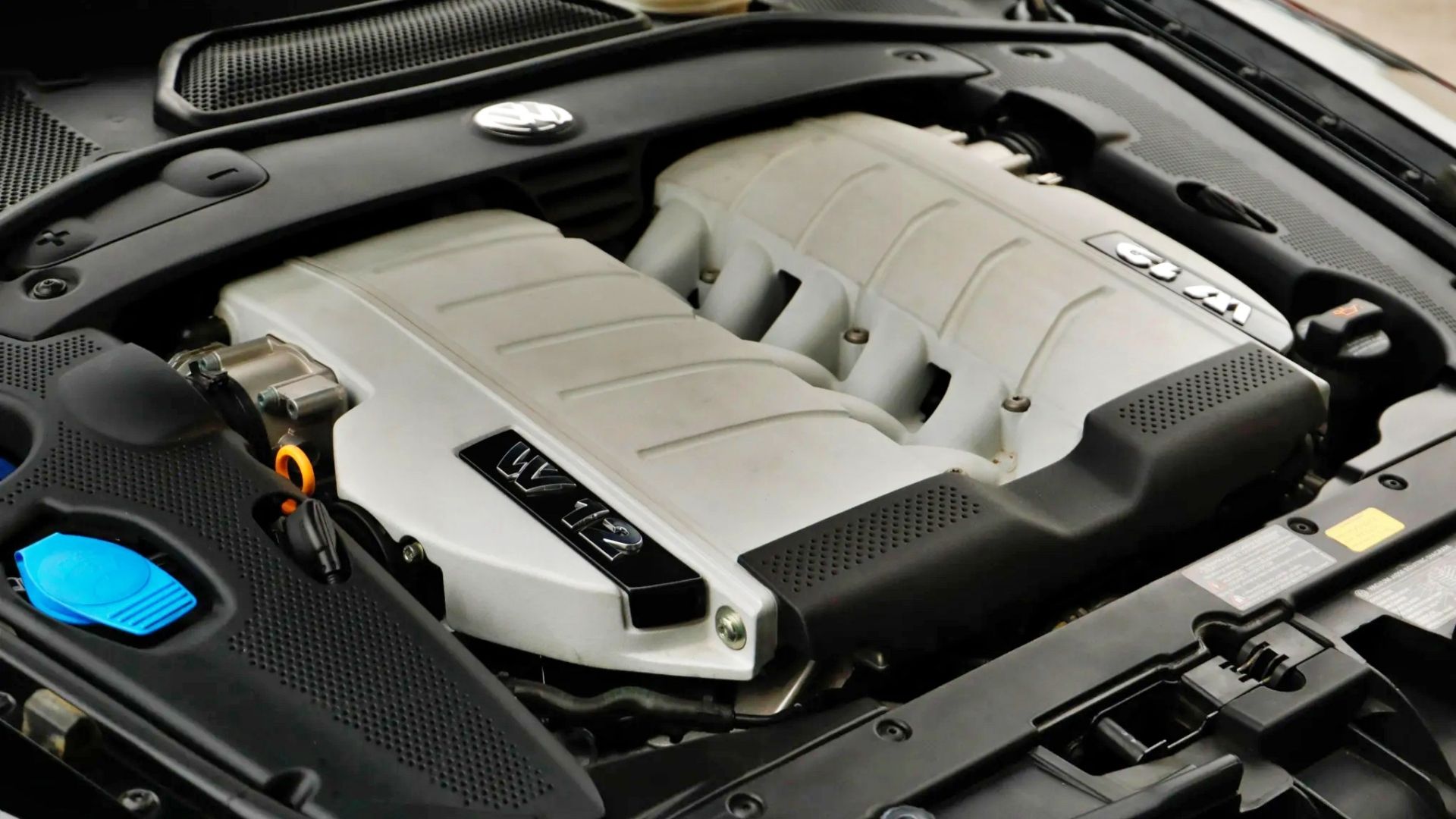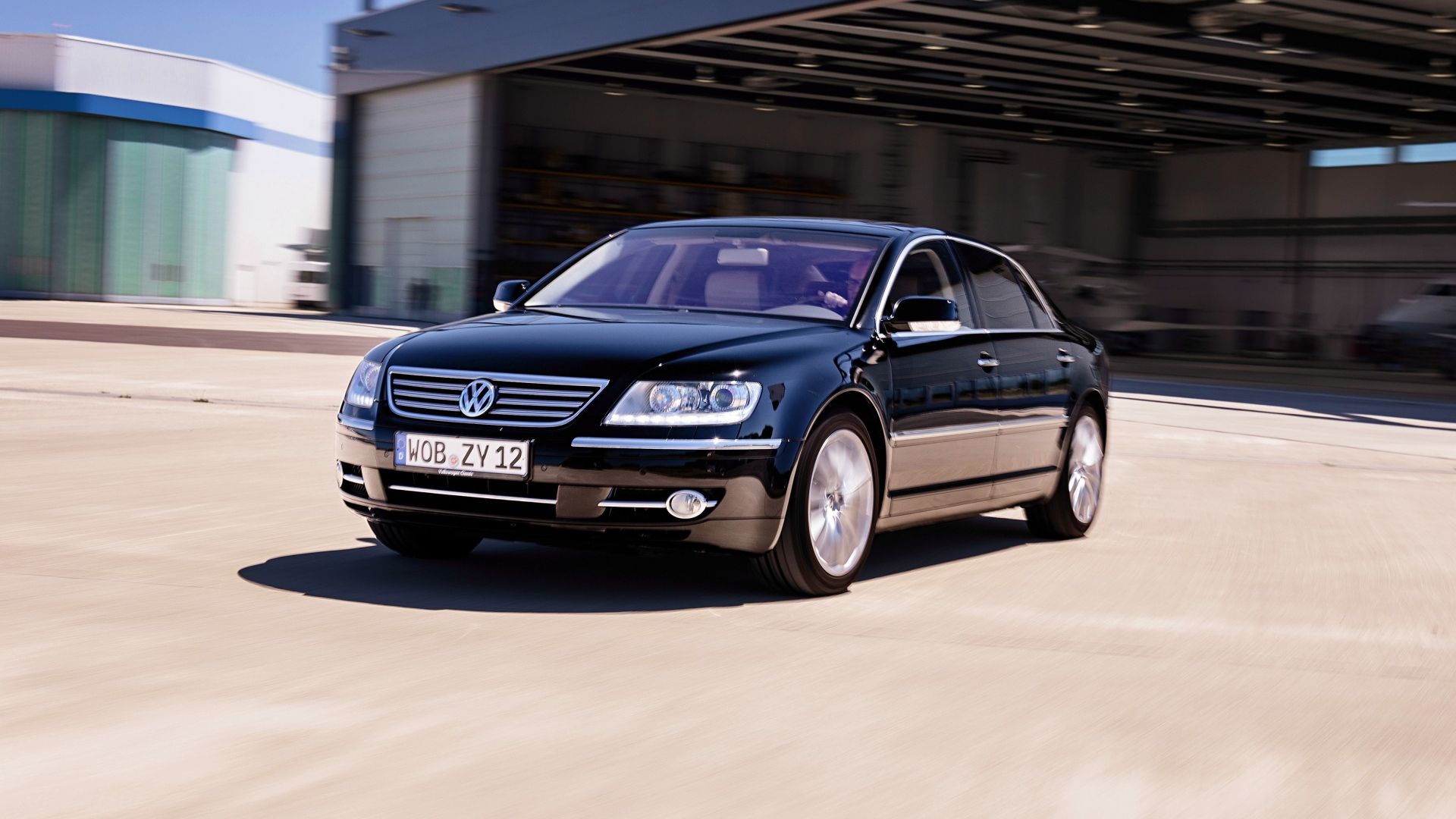Summary
- The Volkswagen Phaeton was designed to compete with the Mercedes-Benz S-Class and other luxury sedans, showcasing VW’s technological advancements.
- The Phaeton’s standout feature is its impressive W-12 engine, which produces 444 horsepower and accelerates from 0 to 60 mph in just over 5 seconds.
- While the Phaeton faced challenges in the market due to its high price, used models can now be found at an average price of $15,000, making it an intriguing option for luxury sedan enthusiasts.
There is no disputing the fact that the Mercedes-Benz S-Class has long been the benchmark of ultra-luxury full-size sedans. The thing about being a benchmark is, that any entity seen as the leader in a market always has competitors gunning for them. Fellow German competitor Volkswagen took up the challenge of dethroning the S-Class from the top of the luxury full-size sedan with the Phaeton powered by a monster W-12 engine.
The VW Phaeton was not just a competitor to the S-Class but, it also took on the BMW 7 Series, Lexus LS, and Audi A8. The Phaeton’s entire purpose was to showcase VW’s superiority and advancement of the company’s D1 platform that went on to underpin many other luxury vehicles including the Bentley Flying Spur and Continental GT. The ultra-plush luxury sedan not only set the standard for the Volkswagen group but also opened the door to some amazing machinery.
Data for this article was sourced from Volkswagen and reputable websites such as repairpal.com and CarandDriver to put this feature together.
A Tale Of Two VR6: The Phaeton Massive W12 Engine
One of the greatest assets of the Volkswagen Phaeton is the massive W-12 engine that sits under the hood, not to be confused with a V-12 engine. The W-12 engine is a completely different form of configuration that is not common in the auto industry, it is however a very fascinating engine form. The W-12 in the Phaeton according to VW is hypothetically derived from merging two-VR-6 engines at a 72-degree configuration.
The engine displaced 366 cubic inches or 6.0 liter and produced a whopping 444 horsepower and 430 pound-feet of torque. This luxury sedan accelerated from 0 to 60 mph in just over five seconds, putting it in the same league as many high-performance luxury sedans, an impressive feat considering the Phaeton’s all-steel construction weight of over 5,100 pounds.
The Phaeton W-12 was not the sole engine available, other options included a pair of VR6 engines with either 3.2 liters or 3.6 liters and a 4.2 liter V-8 engine all gasoline. Diesel options were between a 3.0-liter Turbo Direct Injection (TDI) V-6 or a 5.0-liter V-10 TDI that pushed out 308 horsepower and 553 pound-feet of torque. For the North American market, only the 335 horsepower V-8 and W-12 engines were available to customers, European markets maintained the bulk of other engines mentioned earlier.
The V-8 engine was mated to a six-speed ZF tiptronic automatic transmission while the W-12 received a five-speed version driving all four wheels via Volkswagen’s 4Motion all-wheel drive system. The Phaeton rode on Volkswagen’s adaptive air suspension with continuous damping for maximum road stability and comfort.
Even with such an impressive line of engines, the W-12 stands out for the design characteristics it possesses. The W-12 engine in the Phaeton was designed to be exceptionally smooth and quiet during operation, after all the Phaeton was essentially a cruise ship on wheels.
VW Phaeton W-12 Engine Compared to S-Class (S-600)
|
Year-2002 |
Volkswagen Phaeton W-12 |
Mercedes-Benz S-Class(S-600) |
|
Engine |
6.0 liter W-12 |
5.8 liter V-12 |
|
Power |
444 hp @ 6,200 rpm |
362 hp @ 5,500 rpm |
|
Torque |
430 pound-feet @ 4,000 rpm |
391 pound-feet @4,100 rpm |
|
Acceleration |
5.1 seconds 0-60mph |
4.3 seconds 0-60 mph |
Different variations of this W-12 engine have powered other VW products including the 1997 supercar concept Volkswagen W12. Upmarket vehicles belonging to the VW group such as the Bentley Continental GT and the Bentley Flying Spur both received a twin-turbocharged version of the engine producing an impressive 552 horsepower and 480 pound feet of torque.
Contemporary, Functional, and Exquisite Design Inside Out
Ferdinand Piëch, who served as Volkswagen’s chairman from 1993 to 2002, had grand ambitions for the Phaeton. He presented the engineering team with multiple criteria that the vehicle needed to meet. Among these stipulations was the demand that the Phaeton must be capable of achieving a top speed of 186 mph under scorching exterior temperatures of 122 °F, all while keeping the interior temperature a comfortable 72 °F. These exact prerequisites played a pivotal role in shaping the design and engineering of this opulent sedan.
The front fascia of the Phaeton sports an aerodynamic design with large front side panels that house the bi-xenon headlights. A chrome accented grille houses the VW emblem making sure no one mistakes the Phaeton with any sub $100,000 luxury sedans on the road. The front bumper sits almost flush to the grille giving the Phaeton a rounded appearance, this design is reminiscent of the early 2000s Volkswagen models.
The rear fascia of the Phaeton matches the theme of the front end by maintaining a rounded appearance. Noticeable at the rear is a piece of chrome trim that wraps around the entire bumper and extends to the sides of the vehicle. Other elements include W-12 batching, Phaeton batch, and a centrally mounted VW emblem that also doubles as a proximity-sensitive trunk release button. Exterior styling is fairly reasonable, however, where the Phaeton holds its own against the Mercedes-Benz S-Class in the interior.
Volkswagen knew going against the S-Class required going above and beyond in the interior, starting with the seats. Volkswagen used high-quality materials throughout the interior such as premium Italian leather for the seats, a hand-stitched, leather steering wheel, and leather door inserts. For maximum comfort, the seats were 12-way power adjustable with memory setting, heaters, and four-way power-adjustable lumbar support.
The opulent interior of the Phaeton incorporates rich chestnut and eucalyptus wood accents. Within the center console, a 7.0-inch display for the infotainment system takes center stage, equipped with navigation capabilities, an onboard trip computer, and a high-quality stereo system.
To create a serene ambiance inside, the Phaeton was equipped with notably thick windows that effectively minimized both road noise and excess sunlight. Furthermore, retractable sunshades were provided for the rear windshield and passenger windows, and all windows on the Phaeton were equipped with defoggers, ensuring a consistently clear view, regardless of external temperature conditions.
Like many luxury sedans before it, the VW Phaeton is not without faults, some of the more notable issues included:
- Transmission issues that may cause the vehicle to jerk unexpectedly.
- Electronic gremlins with the power windows, air conditioning, and audio system.
- Air suspension failure was reported in some units.
- Issues with fuel pumps, and fuel injectors that result in poor fuel economy.
- Air conditioning assembly failure and replacement.
Here Is Why You Should Own The VW Phaeton Today
A used Volkswagen Phaeton in 2023 could be an intriguing opportunity for the right buyer, despite the Phaeton being an old guard in the ultra-luxury full-size sedan market it still carries itself well and represents the VW brand well. The Phaeton was offered to the U.S. market in 2004 and only 1,433 units were sold. Subsequent year sales did not improve as only 820 units found a home in 2005.
In 2004, when the Phaeton made its debut in the North American market, it cost a substantial manufacturer’s suggested retail price (MSRP) of $95,000. The price was a significant contributing factor to the luxury sedan’s lack of success. Alternatives such as the Mercedes-Benz S-Class, BMW 7 Series, and Volkswagen Group’s Audi A8 were more compelling. Essentially, those with the means to purchase the Phaeton often found more attractive alternatives, while those who couldn’t afford it were generally indifferent.
Today, however, the story is different. A used VW Phaeton can be had at an average price of $15,000, just under the price of the cheapest new car in America, the Mitsubishi Mirage. There are currently clean examples of first-generation Phaetons with reasonable mileage under $10,000 in the U.S. The VW Phaeton W-12 is in a club with vehicles such as the E39 BMW M5 and the C6 generation Audi S6 that are going to be highly desirable pieces of engineering when the electric revolution takes over in the very near future, best get one before they are gone.
Credit: Source link



.jpg)